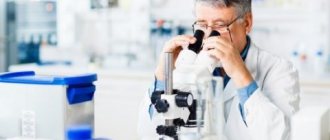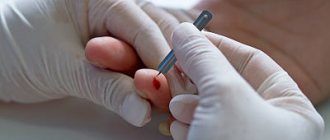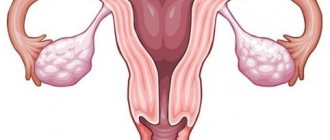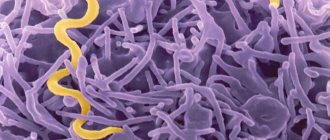A biochemistry test is taken when diagnosing various diseases, in the presence of abnormalities in a general blood test, as well as to monitor the effectiveness of the treatment process.
Blood drawings are carried out by experienced nurses in our clinic or at home. The finished results are automatically sent to the patient’s email within 1-2 days.
On a note! Blood is the basis of life. The slightest change in its composition is a consequence of deviations in the functioning of internal organs, metabolic systems, or is due to the influence of negative environmental factors (poor ecology, hazardous production). A doctor of any specialization, using this analysis in his practice, receives a reliable diagnostic tool.
Depending on the list of complaints and the general clinical picture, the doctor may prescribe both a standard set of “blood biochemistry” and the study of individual indicators.
What is included in a biochemical blood test
Standard biochemical analysis includes the following indicators:
- carbohydrate group: glucose, fructosamine;
- pigment substances (bilirubin);
- enzymes (AST, ALT, gamma-GT, alkaline phosphatase);
- lipid profile (total cholesterol, LDL, triglycerides);
- proteins (total protein, albumin);
- nitrogenous compounds (urea, uric acid, creatinine);
- electrolytes (K, Na, Cl);
- serum iron;
- C-reactive protein.
How to prepare for biochemical analysis
No special long-term preparation is needed. It is enough to comply with the basic requirements:
- Stick to your standard diet, avoid exotic and uncharacteristic dishes.
- Stop taking medications. Statins, hormonal drugs, and antibiotics directly affect blood biochemistry. If stopping medications is not possible, tell your doctor about the medications and their dosages.
- For 2-3 days, eliminate or reduce as much as possible the consumption of alcohol, sour juices, tea, coffee, and energy drinks. Limit nicotine (last cigarette no later than 1 hour before donating blood).
- Avoid stressful situations, active sports and physical overload.
- The last meal is 12 hours before the test.
- In the morning before the procedure, drink a glass of clean, still water.
Indications for biochemical blood tests
Biochemistry analysis is prescribed in the following cases:
- to clarify a controversial diagnosis in the presence of nonspecific symptoms (nausea, vomiting, pain);
- to identify the early stages of the disease (or in case of a hidden pathological process);
- to monitor the condition of the body during treatment;
- during pregnancy (every trimester);
- to monitor risk groups for diabetes and cardiovascular diseases;
- in case of poisoning;
- for diseases of the liver, kidneys and pancreas;
- to monitor the level of microelements and vitamins in case of disturbances in their absorption or to normalize the diet.
Blood is taken from a vein, the procedure itself takes several minutes. When drawing blood, only sterile disposable instruments are used, and the skin at the puncture site is carefully treated with an antiseptic.
How long does it take to test for coronavirus?
How long does it take to test for coronavirus at a medical facility? You can get the results of ELISA and PCR directly on the day of the test or the next day after collecting the biomaterial. The analysis is paid, a referral from a doctor is not required. To use the service, you must first register for the procedure through an online form or by calling.
How long does it take to perform a PCR test?
The PCR test for COVID-19 allows you to detect the DNA of the virus in the patient’s body at the time of sample collection. The material for the study is a smear from the mucous membrane of the oropharynx. The main goals of this type of diagnosis:
- confirm or refute the diagnosis;
- estimate the percentage of asymptomatic disease;
- identify patients in the active phase of the disease.
A swab taken from the nasal and oral mucosa is mixed with reagents and then placed in a specific section. If the material being tested contains COVID-19 cells, the test will detect them. The analysis itself takes 4 hours, but you can receive the conclusion later, it all depends on the workload of the laboratory. Most paid medical centers have results ready within 12 to 36 hours. How many smear tests for coronavirus do they do in government laboratories? It may take more time to decipher the conclusion - from 5 to 10 days.
How long does it take to test for antibodies?
Antibody analysis by ELISA is one of the ways to determine viral compounds based on the antigen-antibody reaction. The formed complex is detected using a special enzyme. Antibodies bind exclusively to certain antigens, due to which the level of reliability and reliability of the results obtained reaches 98%.
The enzyme immunoassay method allows you to detect the presence of specific antibodies to coronavirus infection (IgG to SARS-CoV-2) in the patient’s blood. They appear in the body starting from the ninth day of the disease and persist for one and a half years. Antibody levels vary depending on the stage of the disease. The presence of IgG antibodies in the patient’s blood indicates that his body is already familiar with this virus and the defense system has developed immunity to it.
Enzyme immunoassay is presented in 2 formats:
- conventional ELISA;
- rapid test.
How long does it take to test for coronavirus using the conventional ELISA method? It takes private clinics 1–2 business days to prepare the results. That is, after collecting the sample, you can receive a diagnosis report in your hands the very next day.
Express test is a home type of testing that is carried out as quickly as possible. Detection of the virus in the body is carried out using a test strip on which a drop of blood must be placed. Within 10–15 minutes, you can evaluate the diagnostic result:
- The strip opposite the letter G indicates the presence of immunity and antibodies.
- The strip opposite the letter M indicates an active viral process.
- Two cavities G and M - the patient has been sick for 8 days.
Main indicators of biochemical blood analysis
An independent attempt to find out what a biochemical analysis shows can lead to inadequate conclusions, since the difference in indicators depends not only on age, gender and health status, but also on a number of individual characteristics of the body, which only an experienced doctor can replace.
Decoding the biochemical blood test
Total protein is determined taking into account two protein fractions: albumins and globulins. This is an important indicator of the state of immunity, osmotic pressure and the level of metabolic activity. Norm: 64-83 g/l.
Pathology:
- increased level: infections, inflammation, autoimmune diseases, severe dehydration, malignant tumor process;
- reduced level: gastrointestinal diseases, kidney problems, thyrotoxicosis, prolonged physical overload.
Carbohydrates are represented primarily by glucose, the main product of carbohydrate metabolism. It is used to monitor the condition of the pancreas and thyroid glands, pituitary system, and adrenal glands. Normal: 3.5-5.5 mmol/l.
Pathology:
- increased level: diabetes types 1 and 2, chronic pancreatitis, pathologies of the liver and kidney filtering system, hormonal disorders;
- reduced level: liver dysfunction, pancreatic tumors, endocrine system failures.
Total cholesterol is an important component of lipid metabolism and a building element of cell walls, a participant in the hormonal system and the synthesis of vitamins.
Normal: 3.5-6.5 mmol/l.
Pathology:
- an elevated level is a harbinger or sign of atherosclerosis and coronary heart disease, a sign of damage to the liver, kidneys, and thyroid gland;
- reduced - indicates the presence of pathology in the absorption of substances in the gastrointestinal tract, infectious and hormonal problems.
Total bilirubin allows us to judge the condition of the liver and gallbladder, diseases of the blood system and the presence of infectious processes. Normal: 5-20 µmol/l.
Pathology:
- increased bilirubin indicates problems with the liver/biliary system (viral hepatitis, cholelithiasis, cirrhosis and liver cancer), as well as a lack of vitamin B12;
- reduced - can be observed with anemia, as well as with malnutrition (often due to diets).
ALT is a liver enzyme, found in slightly lower concentrations in the heart, pancreas, and kidneys. It enters the bloodstream during pathological processes that disrupt the structure of organ cells.
Norm: up to 31 units/l – for women; up to 44 units/l – for men. An increased background indicates an infectious liver lesion, myocardial infarction (determined by the ratio with AST).
AST is an important cellular enzyme of amino acid metabolism. It is found in high concentrations in the liver and heart muscle cells. Norm: 10-40 units/l.
Changes:
- an increase in the background indicates myocardial infarction, problems with the liver, pancreas;
- reduced concentration is a sign of severe necrosis, liver injury, vitamin B6 deficiency.
Creatinine is an important participant in the energy supply of the muscular system. It is produced by the kidneys, therefore it is a direct sign of the quality of their work. Norm: 62-115 µmol/l – for men; 53-97 µmol/l – for women.
Pathology:
- increased concentration is an indicator of extensive muscle injury, renal failure;
- a reduced background is observed during fasting, dystrophy, and during pregnancy.
Urea is a product of protein metabolism. Directly related to the diet (vegetarian or meat-eater) and the age of the person (in older people the value is increased). Normal: 2.5-8.3 mmol/l.
Pathology:
- an increase in urea levels indicates problems with the kidneys and heart, bleeding, tumors, urolithiasis, and disruption of the gastrointestinal tract;
- reduced concentrations are typical for pregnant women and for liver disorders.
C-reactive protein is an indicator of the inflammatory process.
Norm: up to 5 mg/l . The higher the concentration, the more active the inflammatory process.
Interpretation table for biochemical blood tests in adults
All norms of biochemical blood analysis are contained in the table. It is used by doctors to decipher tests and interpret data taking into account the overall clinical picture of the patient’s condition.
| Substance | Indicators | Reference values for adults | |
| Men | Women | ||
| Squirrels | Total protein (g/l) | 64-83 | |
| Albumin (g/l) | 33-50 | ||
| Globulins (g/l) | 22-45 | ||
| C-reactive protein (mg/l) | up to 5 | ||
| Enzymes | Alanine aminotransferase (ALT) (U/L) | up to 44 | up to 31 |
| Aspartate aminotransferase (AST) units/l) | 10-40 | ||
| Amylase (units/l) | up to 100 | ||
| Alkaline phosphatase (units/l) | up to 268 | up to 239 | |
| Lipids | Total cholesterol (mmol/l) | 3,5-6,5 | |
| LDL (mmol/l) | 1,91-4,7 | ||
| HDL (mmol/l) | 1,7-2,2 | ||
| Triglycerides (mmol/l) | 0,4-1,8 | ||
| Carbohydrates | Glucose (mmol/l) | 3,5-5,5 | |
| Fructosamine (µmol/l) | 204-284 | ||
| Pigments | Total bilirubin (µmol/l) | 5-20 | |
| Direct bilirubin (µmol/l) | 0-5 | ||
| Nitrogenous substances | Creatinine (µmol/l) | 62-115 | 53-97 |
| Uric acid (µmol/l) | 208-319 | 148-349 | |
| Urea (mmol/l) | 2,5-8,3 | ||
| Microelements and vitamins | Iron (µmol/l | 11,6-30,4 | 8,8-30,4 |
| Potassium (mmol/l) | 3,4-5,5 | ||
| Calcium (mmol/l) | 2,14-2,5 | ||
| Sodium (mmol/l) | 138-145 | ||
| Phosphorus (mmol/l) | 0,88-1,44 | ||
| Magnesium (mmol/l) | 0,67-1,04 | ||
| Folic acid (ng/ml) | 3-17 | ||
| B12 (ng/ml) | 181-900 | ||
Please note that some biochemical blood test indicators will differ for women and men.
Decoding the results of a general blood test
Decrease in hemoglobin, red blood cells, hematocrit
often talks about anemia. Their level (primarily hemoglobin) determines the severity of the anemic syndrome. Hemoglobin will also be reduced with an increase in blood plasma volume (hemodilution), which normally occurs during pregnancy (but not less than 110 g/l). Increased values of these indicators will indicate increased hematopoiesis or dehydration (hemoconcentration).
Leukocytes
- organisms' defense cells. An increase in leukocytes (leukocytosis) will occur in response to an infectious process (introduction, proliferation of foreign microorganisms), neoplasms, foreign body, injury.
Platelet function
is to stop bleeding by forming a clot. Changes in the number of platelets will indicate disturbances in the hemostatic system.
The level of blood cells is also affected by autoimmune and hormonal diseases, diseases of the blood and bone marrow systems, intoxication, allergies, and taking certain medications.
Thus, a general blood test provides information about whether there is a pathology in the case of a preventive study, and allows the doctor to understand in which direction to carry out further diagnostics if symptoms are present, as well as monitor the course of the disease and the effectiveness of treatment.










